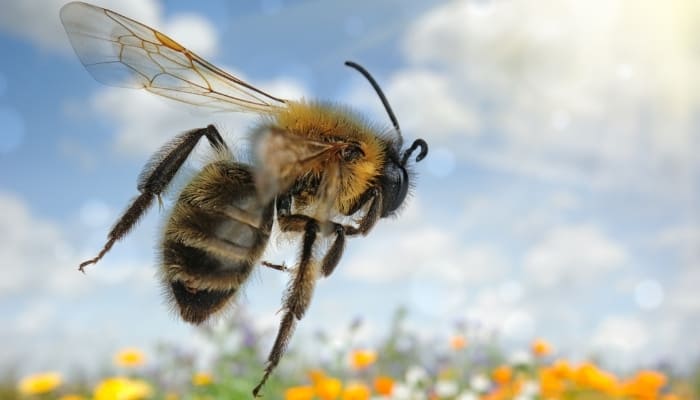Having bees in the garden typically signifies a healthy and thriving ecosystem with sufficient diversity to attract these important pollinators.
Bees are essential to most gardens, especially those that contain any sort of fruiting tree, any vegetable that produces flowers to yield, or flowers that you desire to self-seed.
However, for some people, bees might not be the ideal guest in the home garden. Some of us are highly allergic to bee stings, some of us fear these little critters, and some of us simply do not want them around.
Whatever the reason, we have compiled a list of some flowers that will minimize the bees in your garden.
1. Marigolds
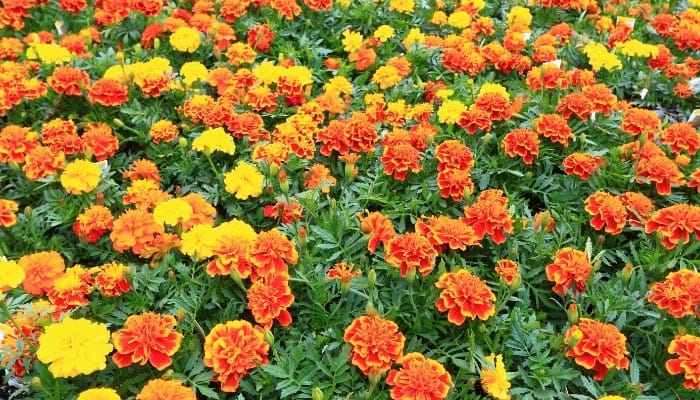
Marigolds have a flower head called a “double flower.” Plants like these make it harder for bees to collect nectar and pollen as these lay deeper within the flower.
In spring and summer, when there are plenty of other food sources around, bees will opt for the flower that takes the least amount of effort to feed from.
Marigolds also emit a strong fragrance that can be off-putting for many insects, including bees. For this reason, gardeners often plant marigolds to ward-off unwanted insects.
2. Geraniums
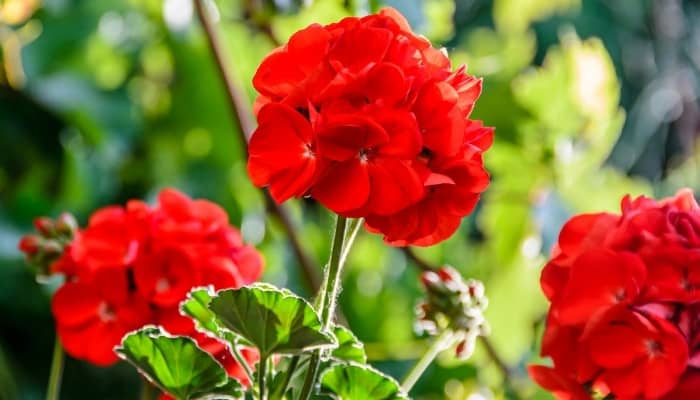
Geraniums are a staple in many traditional garden settings and are great attractants for insects like butterflies.
Bees don’t really care for geraniums, and dark-red flower varieties are generally the best for discouraging browsing bees.
These flowers also exude a strong smell and contain little nectar, so bees will find other, more enticing flowers.
3. Feverfew
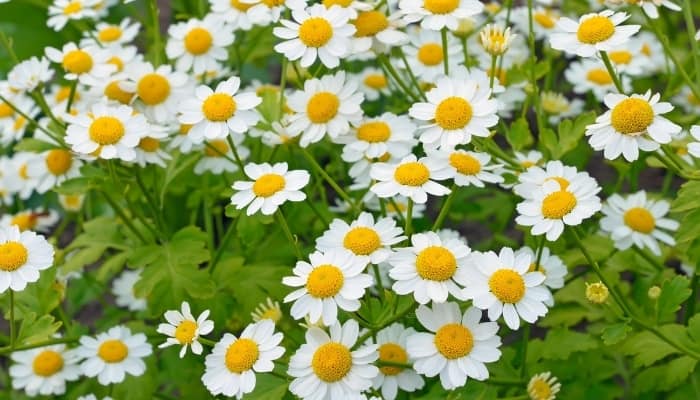
These are attractive, daisy-like flowers with classic white petals and a bright yellow stigma. Because these plants give off a potent aromatic oil, bees will avoid these blooms.
This is a great specimen to plant in hanging pots on balconies, patios, and other outdoor areas to keep bees away from the house.
4. Red Lilies
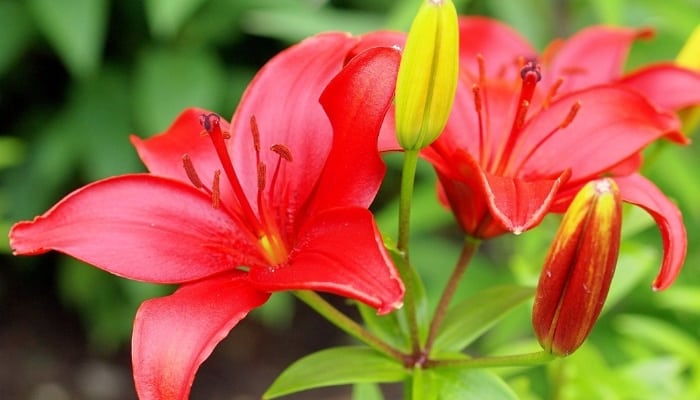
Like most dark-red colored flowers, red lilies are not very attractive to bees.
The multiple, spread-out petals of this flower really look like a predator, such as a large spider, to the bee, and therefore, bees will be unlikely to browse this plant.
The structure of the flower also makes it much more difficult to reach pollen and nectar and just represents too much trouble for bees, especially when there are other flowers on offer elsewhere.
5. Cardinal Flower
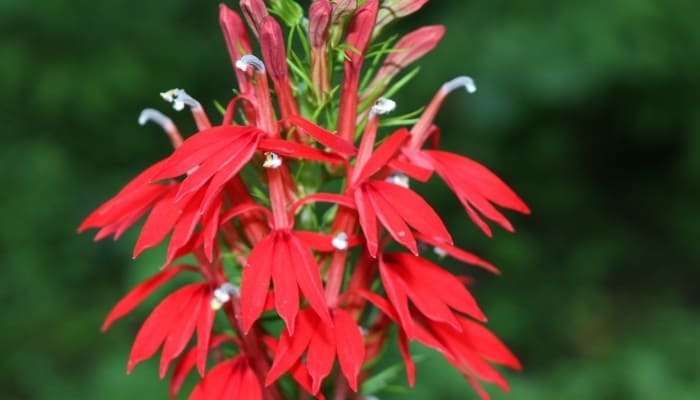
Named after the intense red color of a Catholic cardinal’s robe, these flowers grow in elegant, vertical heads.
This deep shade of red is also a big warning trigger for bees, and they will avoid these flowers whenever possible.
These are also indigenous to the United States and are therefore an excellent choice for creating a native garden.
In many regions of the US, these flowers will manage themselves, being ideally suited to the environment. Cardinal flowers are an attractive choice for perennial borders in gardens.
6. Red Hot Poker
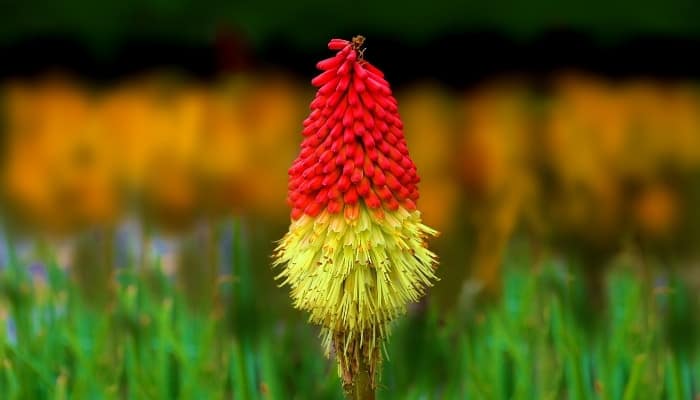
These stunning and aggressive perennials are adored for their bright colors and tell-tale, upright flower heads.
There are dwarf varieties of these plants also, which allow gardeners to play around with different heights in their garden.
While bees may occasionally visit these flowers, the stark, fiery-red crowns usually act as a deterrent.
7. Tulips
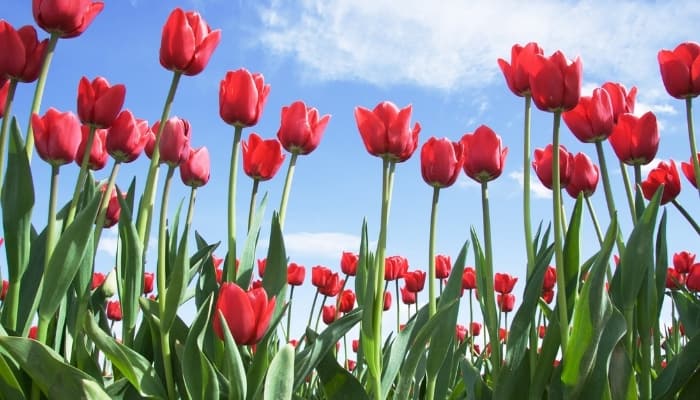
Although tulips are beautiful and are among the most cultivated and sought-after flowers, they do not rank very high on a bee’s must-have list.
While color might come into play, what probably causes this disinterest is the impracticality of the flower heads.
Tulips have been bred ferociously to produce the best-looking cultivars possible, but this has led to a close-structured flower, which makes gathering nectar very difficult for bees.
8. Amaryllis
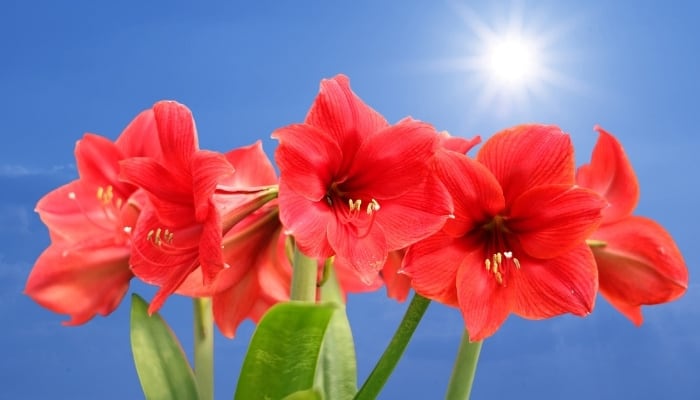
Did you know that an amaryllis can flower for up to 70 years? Incredible! These are attractive flowers with a very unique look. They originate from South Africa and will not tolerate frost.
These flowers are not frequented by bees much as their long, tubular flower shape makes it difficult for bees to reach inside for the nectar.
9. Red Ranunculus
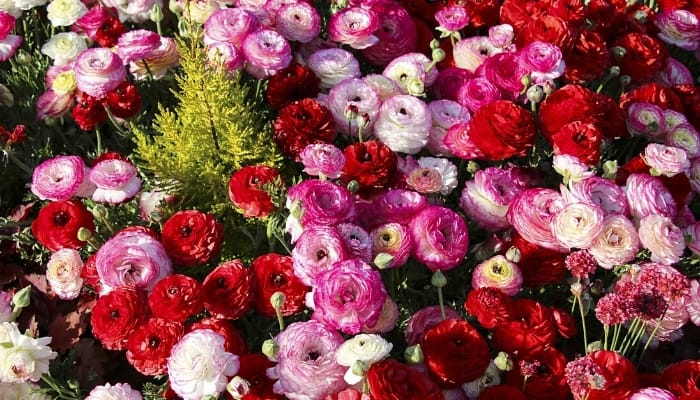
Often mistaken for roses, red ranunculus merges both the dainty, sleek profile of poppies and the robust and hard-hitting look of a rose.
The ranunculus, however, will not grow in towering bushes but stays close to the ground in thick patches.
These flowers are fairly easy to grow and will be a perennial plant in gardens without frost. Their bright-red color, tight structure, and highly fragrant aroma will all help to keep bees away and looking for better options.
10. Celosia
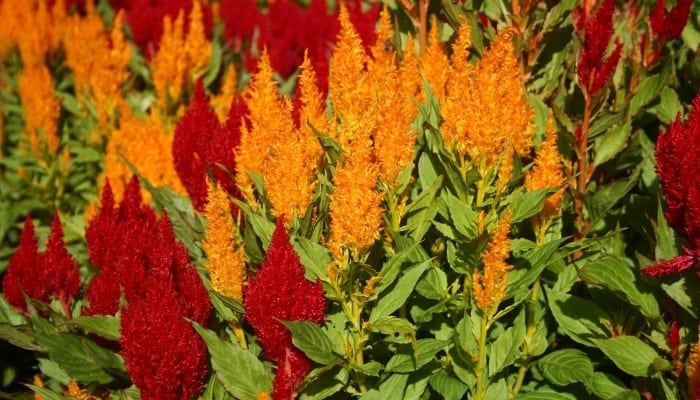
Celosias belong to the Amaranth family, a group of plants that have been used since ancient times for their edible and highly nutritional leaves and seeds.
The name comes from a Greek word meaning “burning,” which refers to the flame-like color and shape of the flower head.
While this flower does see moderate visitation by bees, it is favored more by smaller insects or those with a long proboscis that can easily reach inside narrow, individual flowers.
11. Forsythia
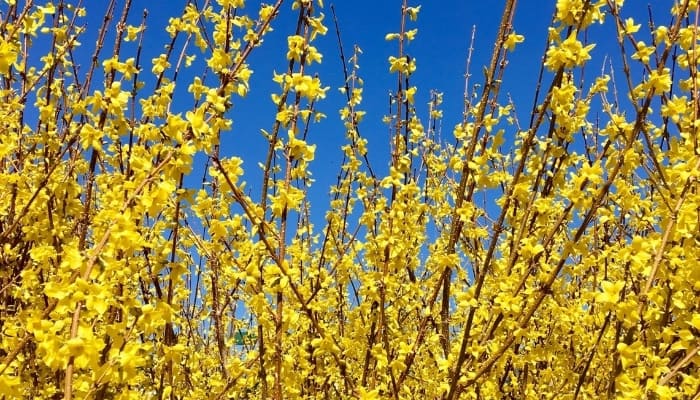
Sometimes known as the “Easter tree,” forsythias create magnificent displays of rich, yellow blooms that mark the turning of spring.
For this reason, these flowers will often be perused by insects looking for the first food sources after the winter.
However, there is little nectar and pollen content in these flowers, and since they will usually bloom around the same time as dandelions, bees will much prefer the latter.
Forsythia also makes an absolutely delicious syrup or tea, great for those with winter blues and in need of a nutritious, homemade pick-me-up.
12. Red Roses
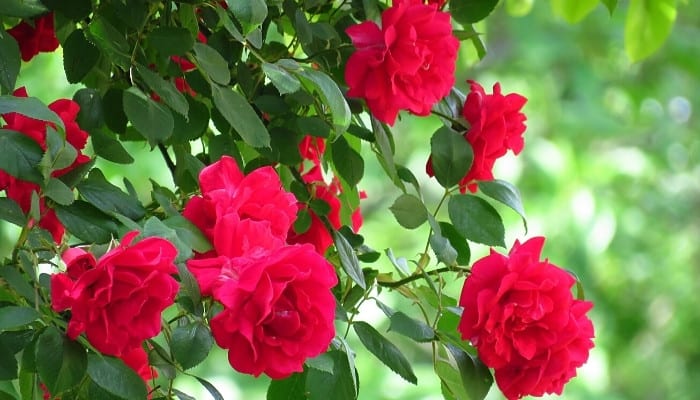
People have loved roses for thousands of years, and no wonder — their scent and their beauty are exquisite and make them revered ornamentals.
Surprisingly, however, bees don’t share our love for these flowers, and they will actively avoid roses, especially red varieties.
Bees are not fans of red flowers and for an interesting reason. Bees do not see the same as humans and cannot differentiate red from black.
Black and dark colors represent threats to bees, and therefore, bees will avoid colors such as these or even see dark clothing as threatening — so beware!
13. Bleeding Hearts
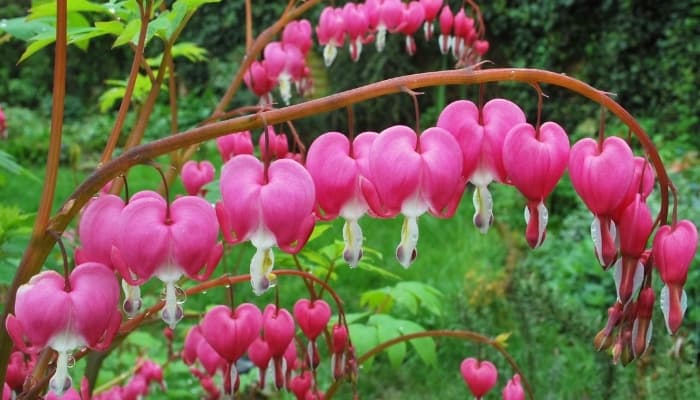
These are among the most unique flowers available to home gardeners, and you get exactly what’s described — pink, petite, heart-shaped flowers with small, straight petals beneath that make it appear as if the heart above is bleeding.
These flowers have developed to attract a specific set of pollinators that include hummingbirds and butterflies.
Bumblebees may also visit this flower, but these gentle giants very rarely sting and will leave you in peace if you do the same.
14. Begonia
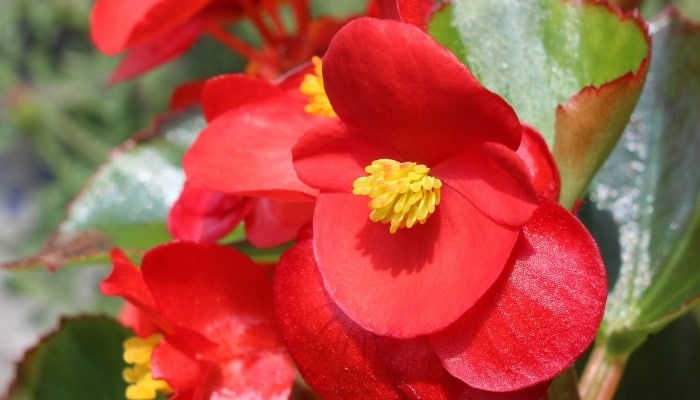
Begonias represent a vast genus of plants and come in a huge variety. The flowering varieties are often a dazzling array of all colors, shapes, and sizes and are ideal as indoor plants or outdoor ones in tropical or subtropical climates.
Flowers often contain very little nectar and, therefore, are unappealing to honeybees.
15. Red Alstroemeria
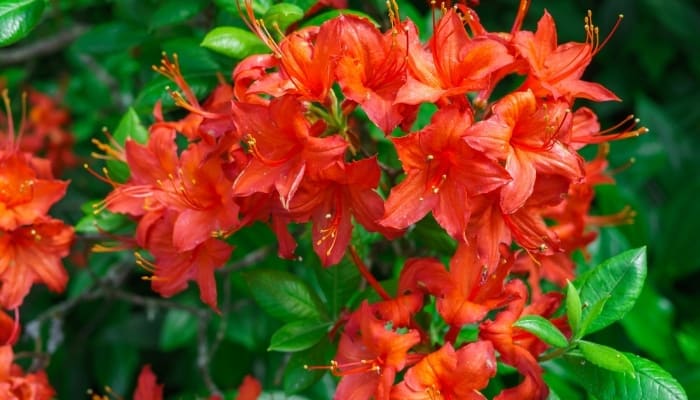
Commonly known as Peruvian lily, these flowers can grow to an impressive 4 feet in height and bloom in incredibly vibrant red hues.
For this reason, bees are usually cautious of getting too close and will normally resist.
16. Lemongrass
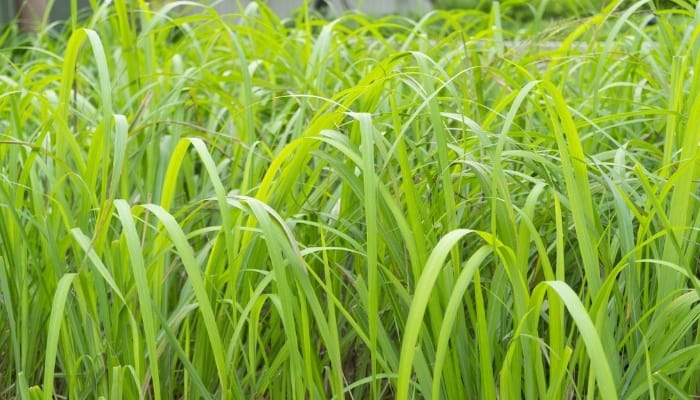
You will find lemongrass in many dishes from South-East Asia, this incredibly pleasant herb has a wonderful citrus aroma.
Used by locals as a mosquito repellant, lemongrass is also a fantastic way to steer bees away from your home.
Though flowering is rare when grown outside of the tropics, growing this herb is super simple: Plant in a sunny spot, give it plenty of water, and it will just keep growing.
17. Wormwood
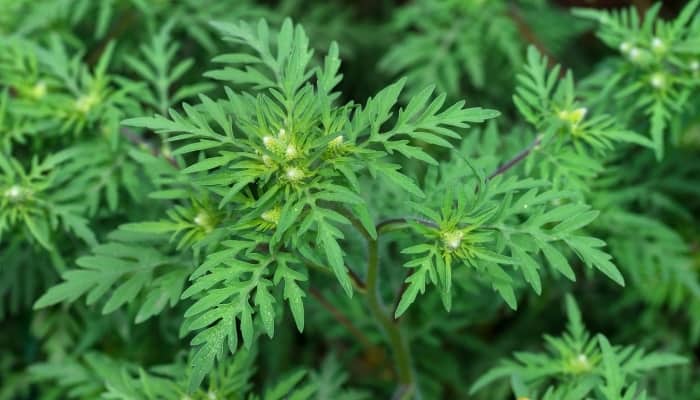
Wormwood is a herb that has been used in European folk medicine for centuries. It has a mild smell to humans and is an excellent plant for gardeners wishing to repel many kinds of insects.
Wormwood has developed to spread its pollen by wind, meaning that it does not rely on insects to help it survive.
18. Petunias
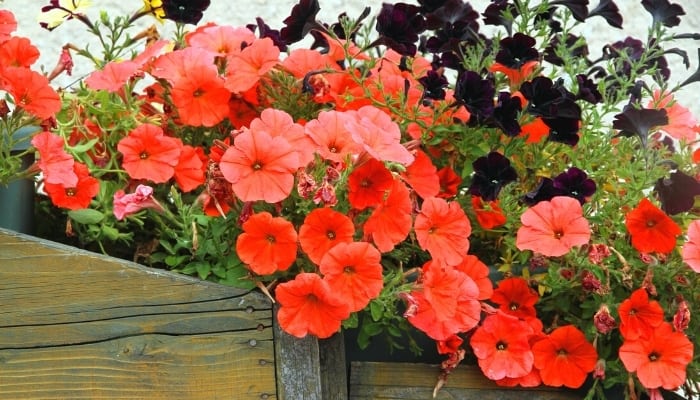
Petunias are a favorite flower for gardeners everywhere, and with a multitude of blossoms, they make superb plants for ground covers, garden borders, and pots of all kinds.
Red petunias are particularly off-putting to bees, and you should have little to no visits from them after planting these flowers.
19. Pennyroyal
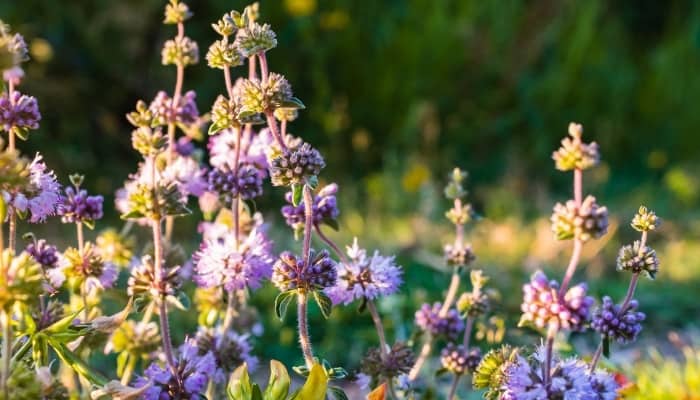
Giving off a scent similar to spearmint (which bees definitely don’t like), this is a great plant for gardeners who enjoy cultivating medicinal plants, as it has often been used in herbal remedies.
This plant also repels many other kinds of annoying insects, like mosquitos and flies.
Pennyroyal is very easy to grow – but think twice about planting in your region as it is considered an invasive species in some areas and will quickly spread.
20. Citronella
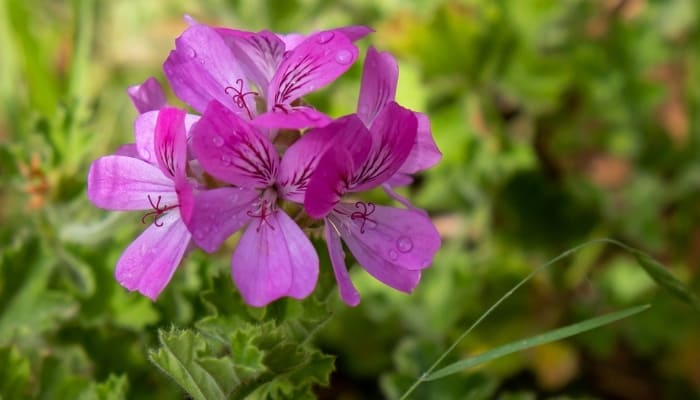
One of the key ingredients of many natural mosquito repellants, citronella emits a distinctive and very intense aroma. Some growers dry this plant and burn small bundles like incense.
The best thing about citronella is that it is an eco-friendly way to repel bees, and it will not harm them but simply signal them to move away.
21. Cardinal Vine
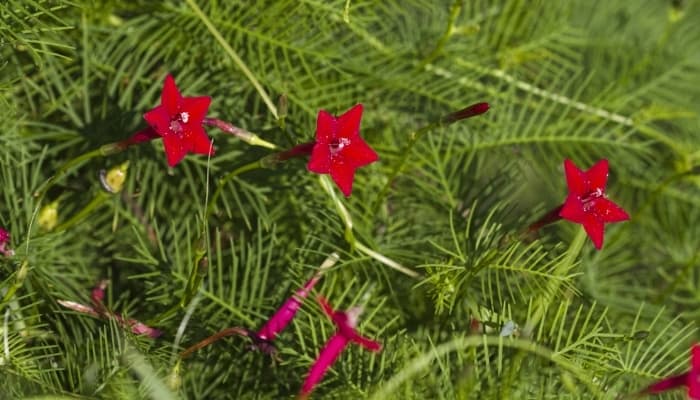
These plants are something truly special. Growing with high-reaching vines, their large, segmented, deep-green leaves are a superb compliment to their bright-red, five-pointed flowers.
These plants are also something of an anomaly as they have been artificially bred and do not naturally exist in nature. Because of this, bees do not like them and don’t find them to be an attractive food source.
22. Red Anemone
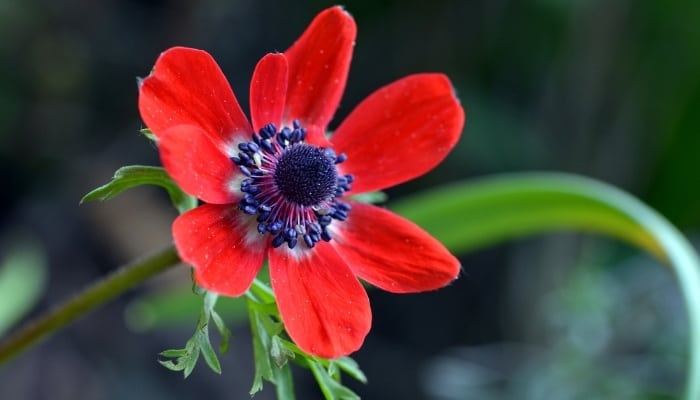
Very similar to poppies, these flowers are a real spectacle of bright, popping color in the garden and are dainty enough that they are not overpowering.
Their bright-red color will alarm bees, although they have been known to be frequented by bees when grown beside other, bee-attracting flowers.
23. Red Carnations
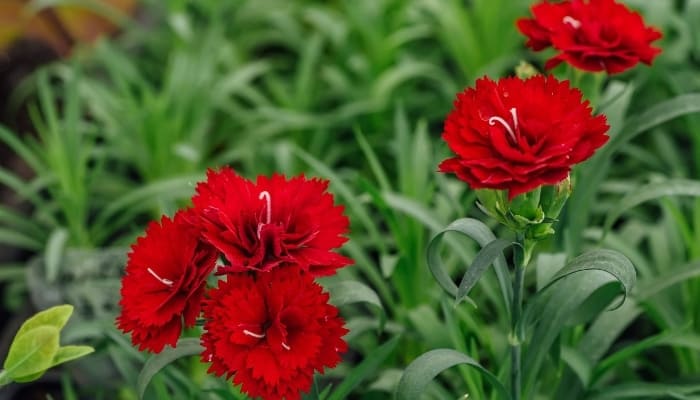
Red carnations are a good example of a flower that relies on pollinators other than bees, so it makes sense to add these classic flowers to your bee-free home garden.
It is usually butterflies that will visit carnations, and they, of course, do not sting or bite and are no threat to pets, children, or homeowners.
24. Red Daylilies
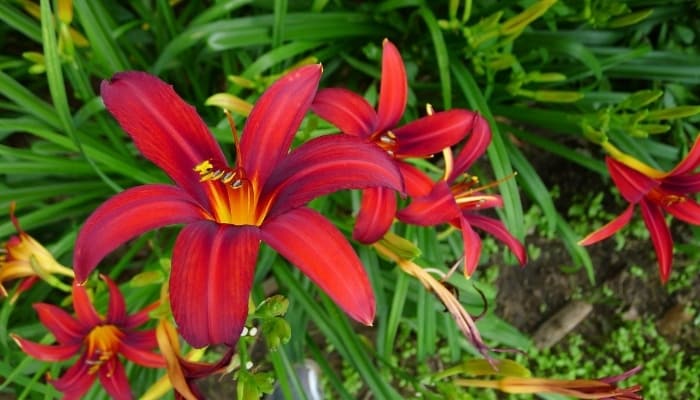
Another variety of lily that is not a favorite of bees, the red daylily can be grown without much worry of attracting unwelcome visitors.
Red and yellow flowers will delight growers and onlookers but do little to appeal to bees.
25. Maltese Cross Flower
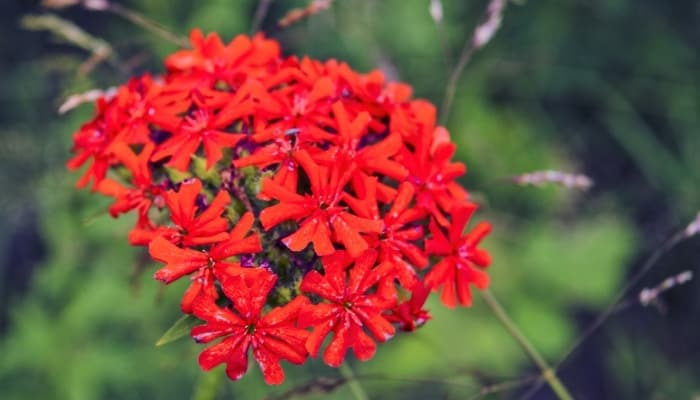
Maltese cross flowers are stunning with large heads consisting of many small, vivid, red flowers and attractive green foliage.
Flowering in mid-summer, these are popular perennial plants. There are numerous colors available; however, the best varieties to choose from that won’t attract bees are red or scarlet.
26. Red Dahlias
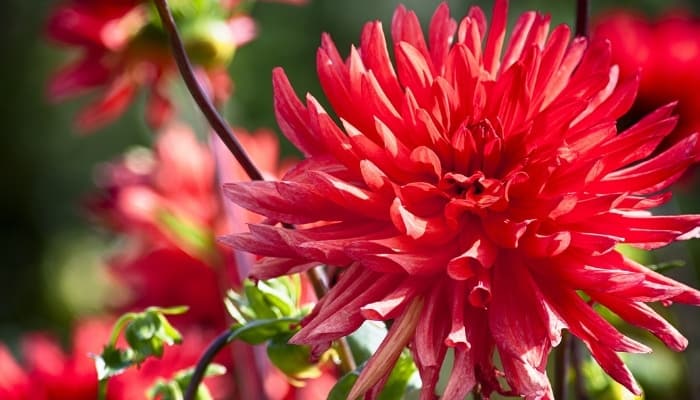
Many people consider dahlias to be on the top of the list when it comes to flowers for the summer garden.
These deliciously red flowers just scream warmth and sunshine. While bumble bees may appear on red dahlias, honeybees will usually go for easier pickings.
Conclusion
While there are many flowers that bees will stay away from, if there are no other sources of food, you should expect to get a few drop-ins.
You could try natural spray repellents, such as peppermint oil, crushed garlic, or vanilla extract, diluted in water and applied to flowers.

